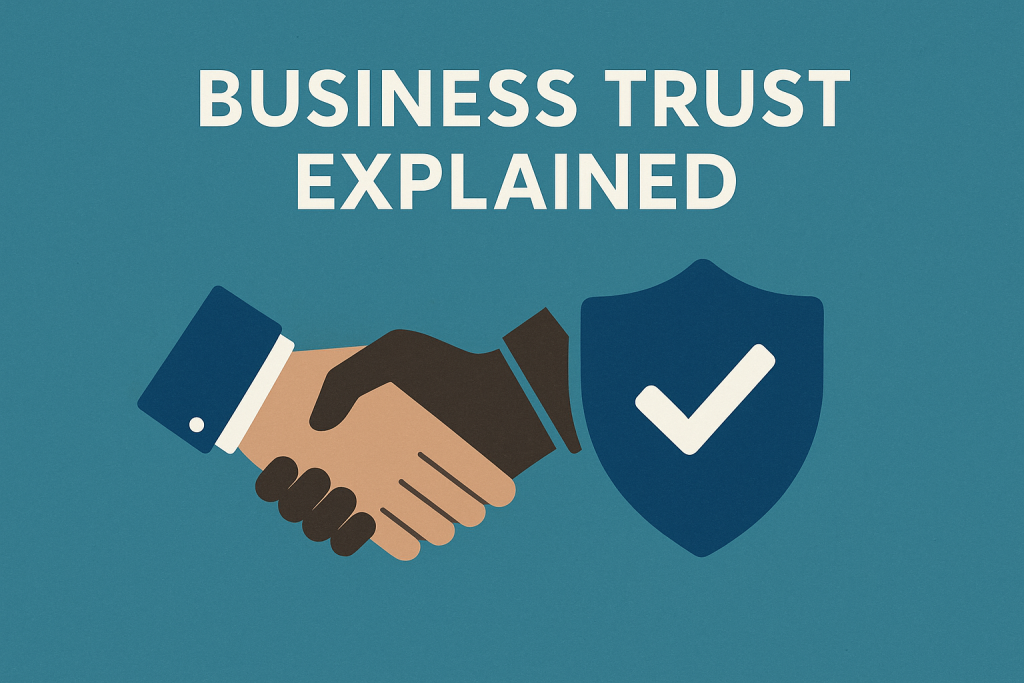Many entrepreneurs seek flexible ways to protect and manage their companies. A business trust serves as a legal framework where trustees oversee operations or ownership stakes for beneficiaries. Unlike standard corporations or LLCs, this structure blends asset protection with unique management roles.
Trusts in this context operate similarly to personal asset management tools but focus on commercial interests. Trustees handle day-to-day decisions, while beneficiaries receive profits without direct involvement. This separation often appeals to those prioritizing privacy or multi-generational planning.
Three main roles define these arrangements: grantors establish the trust, trustees manage operations, and beneficiaries gain financial benefits. Legal systems recognize these entities as corporations for transactions, though they offer distinct tax advantages and liability shields.
Ownership structures vary widely. Some trusts hold partial stakes in ventures, while others act as full legal owners. This flexibility makes them popular for real estate ventures, family businesses, and investment portfolios seeking continuity beyond individual ownership.
Key Takeaways
- Operates as a corporation for legal purposes with unique tax benefits
- Separates management (trustees) from financial benefits (beneficiaries)
- Protects assets better than sole proprietorships or partnerships
- Enables multi-generational business continuity
- Offers privacy advantages compared to traditional corporate structures
Understanding What is a Business Trust
Asset management structures have evolved to meet modern commercial needs. Business trusts create legally binding agreements where control shifts from owners to appointed managers. This separation allows operations to continue smoothly even as ownership interests change over time.
Definition and Overview
A business trust functions through three core roles. Grantors establish the framework, transferring assets into the trust. Trustees then manage those holdings, bound by law to prioritize beneficiary interests. Those beneficiaries gain financial benefits without operational responsibilities.
| Feature | Business Trust | Corporation | LLC |
|---|---|---|---|
| Liability Protection | High | Moderate | High |
| Management Structure | Trustee-controlled | Shareholder-elected | Member-managed |
| Tax Flexibility | Pass-through options | Double taxation risk | Pass-through default |
Historical Context and Modern Usage
First appearing in 19th-century common law, these arrangements gained traction through vehicles like the Massachusetts business trust. Today, they serve dual purposes: shielding assets from creditors and enabling tax-efficient wealth transfers across generations.
Forty-three states now recognize business trusts, each with unique registration rules. Entrepreneurs often combine multiple trusts to hold different parts of their ventures, blending privacy with strategic control.
Types of Business Trusts and Their Structures
Legal frameworks for commercial operations vary significantly across entities. Three primary structures govern asset management and profit distribution under IRS guidelines. Each type serves unique operational needs while addressing tax obligations and beneficiary rights. Entrepreneurs evaluating business opportunities may want to understand how much it costs to start a storage unit business before committing to the self-storage industry.
Grantor Trusts
In these arrangements, the creator (grantor) retains full authority over distributions and assets. All income flows directly to the grantor’s tax returns, simplifying filings. This control makes it ideal for owners prioritizing decision-making power.
- Tax liability stays with the grantor
- No IRS approval required for setup
- Revocable options allow structural changes
Simple Trusts
Simple trust structures face strict operational rules. They must distribute 100% of annual profits to beneficiaries and avoid principal assets entirely. The IRS mandates annual verification to maintain this classification.
- Annual tax return filings required
- Limited expense deductions permitted
- Beneficiaries handle income taxes
Complex Trusts and Their Variants
Complex trust frameworks offer flexibility lacking in simpler models. Trustees can allocate partial profits, reinvest funds, or donate to charities. These entities often suit multi-generational wealth plans or philanthropic goals.
- Multiple distributions options per fiscal year
- Expanded deduct certain expenses allowances
- Mandatory annual file tax return submissions
Pros, Cons, and Key Considerations
Strategic ownership models influence both growth and risk management. Evaluating commercial frameworks requires understanding their strengths and limitations. Let’s explore why some organizations choose this path – and why others hesitate.
Advantages: Protection and Operational Freedom
Liability shields rank among the top benefits. Beneficiaries avoid personal responsibility for debts, similar to LLC protections. Creditors typically can’t claim personal property when issues arise.
Privacy stands out compared to traditional structures. Unlike corporations, trusts don’t disclose ownership details in public filings. This confidentiality helps protect competitive strategies and family wealth.
| Feature | Business Trust | LLC | Corporation |
|---|---|---|---|
| Public Records | Private | Partial disclosure | Full disclosure |
| Setup Cost | $5,000+ | $500-$1,500 | $400-$800 |
| Lifespan Limit | 99 years | Unlimited | Unlimited |
Challenges: Costs and Compliance Demands
Initial setup often exceeds $5,000 due to attorney fees. Legal documents require precise language to avoid tax complications or operational disputes. Hourly rates for specialists average $500, raising long-term expenses.
Ongoing maintenance includes annual filings and regulatory updates. Trustees must track changing laws across states where assets operate. Some structures dissolve after 99 years, complicating legacy plans.
Despite these hurdles, many find the trade-offs worthwhile. Estate planning flexibility and asset security often justify the investment for high-net-worth portfolios.
How Business Trusts Operate: Formation and Management
Establishing this legal framework begins with collaborative planning. Founders work with specialized attorneys to outline goals and operational boundaries. The process transforms verbal agreements into binding documents through careful documentation.
Declaration of Trust and Trustee Responsibilities
A declaration of trust serves as the operational blueprint. This legal document specifies:
- Duration of the arrangement (often decades)
- Decision-making authority for trustees
- Profit-sharing percentages for beneficiaries
Trustees assume fiduciary obligations requiring them to prioritize beneficiary interests. They manage holdings, approve contracts, and oversee financial reporting. Most arrangements feature a single trustee handling daily operations.
-
If you’re unsure whether your nursing license qualifies you to launch a wellness clinic, this breakdown on how RNs can legally operate IV hydration services is a must-read.
Asset Management, Distributions, and Tax Implications
Trustees balance growth with income generation. They might reinvest profits or schedule monthly payments to beneficiaries. Tax treatment varies by structure:
| Trust Type | Tax Filing | Distribution Rules |
|---|---|---|
| Grantor | Creator’s return | Flexible timing |
| Simple | Separate return | 100% annual payouts |
| Complex | Separate return | Partial payments allowed |
At termination, assets transfer automatically to designated recipients. Proper planning ensures smooth transitions while maintaining liability protections throughout the entity’s lifespan.
Conclusion
Choosing the right legal framework shapes long-term success. Business trusts blend asset protection with management flexibility, ideal for family enterprises or long-term holdings. Three main types exist: grantor models for direct control, simple structures for fixed payouts, and complex versions enabling reinvestment strategies.
Trustees oversee operations while beneficiaries receive profits without liability risks. This separation works well for real estate portfolios or ventures prioritizing privacy over public disclosure. Compared to corporations, these arrangements often streamline ownership transitions across generations.
While setup costs exceed standard LLCs, the trade-off makes sense for high-value assets needing robust shields. Annual compliance demands and potential expiration dates require strategic planning. Always consult legal and financial experts to navigate tax rules and documentation needs.
Ask professionals about management flexibility, distribution timelines, and state-specific registration requirements. For those seeking legacy continuity or enhanced privacy, this structure frequently outperforms traditional corporate models when properly maintained.







